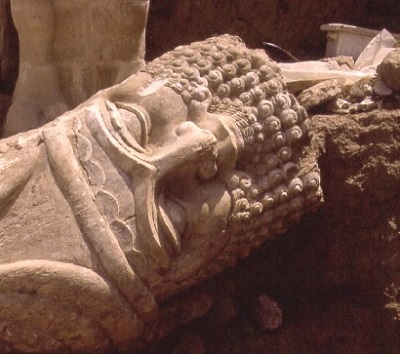The treasure of Nineveh
Publish date 24-04-2022
 Since 2012, the University of Udine has launched a vast multidisciplinary project aimed at systematically investigating the region surrounding the ancient city of Nineveh (now Mosul), called PARTeN (Land of Nineveh Regional Archaeological Project) and coordinated by prof. Daniele Morandi Bonacossi. After the success of 2020, when the project won the International Archaeological Discovery Award "Khaled al-Asaad" for the discovery of the rock reliefs of Faida, also in 2021 there was no shortage of noteworthy finds.
Since 2012, the University of Udine has launched a vast multidisciplinary project aimed at systematically investigating the region surrounding the ancient city of Nineveh (now Mosul), called PARTeN (Land of Nineveh Regional Archaeological Project) and coordinated by prof. Daniele Morandi Bonacossi. After the success of 2020, when the project won the International Archaeological Discovery Award "Khaled al-Asaad" for the discovery of the rock reliefs of Faida, also in 2021 there was no shortage of noteworthy finds.
The region in which the site of Nineveh is located played a crucial role for ancient Mesopotamia from 3000 BC up to the Islamic age, also playing the role of capital of the Assyrian kingdom between VIII and V century. B.C. Research by the University of Udine, together with local and international partners, aims to reconstruct the natural and cultural landscape of the region, associated with the documentation, conservation and management of the archaeological monuments present in the Dohuk region.
The investigations carried out in 2021 brought to light two important contexts: some tanks for the production of wine and the presence of an aqueduct. As for the first discovery, the basins are located behind the site of Khinis, famous for a large rock carving depicting King Sennacherib offering offerings to some deities, created to celebrate the starting point of the great canal that the same king built to irrigate the plain. The 14 basins, dug directly into the limestone, probably represent the oldest site in the region specializing in the production of wine, a fundamental drink in the Assyrian era, as evidenced by written sources, for banquets and rituals.
The aqueduct, found in the Shiv Asha area, , on the other hand, is part of a group of four similar structures, not yet fully investigated, probably dating back to 700 BC.
These structures are part of a dense network of canals, dams and other water control structures widespread in the region and built in the Assyrian era and which constitute the first aqueducts known to date.
Agnese Picco
NP January 2022




